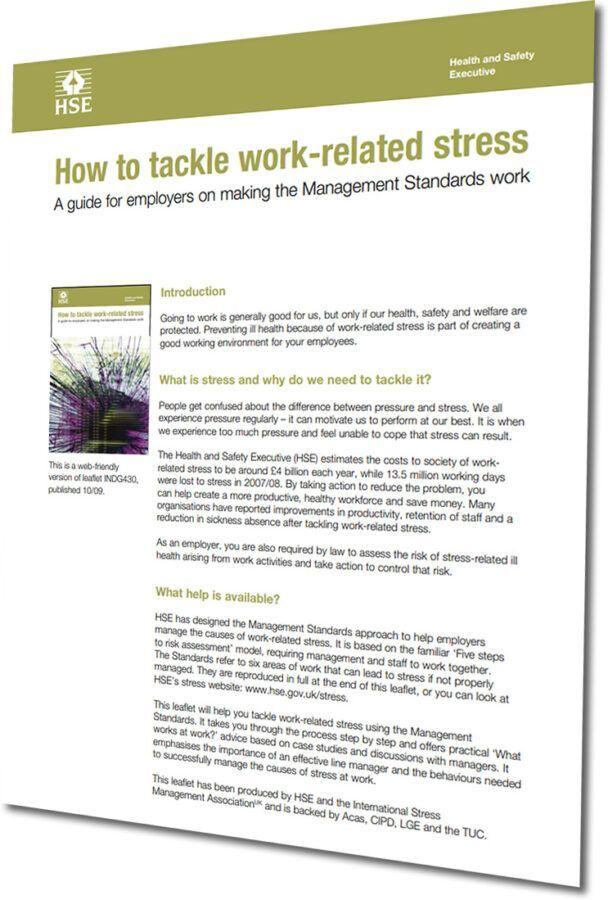The Great Resignation is a term invented in May 2021 to refer to the unprecedented amount of individuals resigning their employment since 2020, at the start of the Covid 19 pandemic. Many studies connect the link between resignations with work-life balance concerns. According to PwC figures, widespread resignations will continue through 2022, with 20% of those polled in the UK indicating that they are highly likely to change employment within a year. While appropriate financial benefits remain a significant motivation for changing professions, cash rewards are no longer sufficient to keep employees satisfied; instead, more workers are prioritising non-financial aspects of the work culture, and are looking for employers who care about developing a health-creating work environment, where people can thrive.
Mental and physical health and wellbeing are key considerations in creating such environments. According to LinkedIn’s Talent Trends 2020 poll, as the number of millennials in the workplace has risen, so have the demands for support and education on mental and physical health. The poll indicates that one of the most important aspects for choosing a future employer is ensuring that they care about and support employees’ mental health, which in turn ensures that they thrive in a happy working environment and can achieve a healthy work-life balance.
What is Employee turnover?
- Staff turnover is the total number of employees who have left the company in a given period of time. It includes those who leave voluntarily or involuntary.
- Voluntary turnover accounts for employees who have left the company of their own volition, often to take a new job with another company, to obtain training, for personal reasons (including those above) or due to retirement.
- Involuntary turnover is the termination of employees who have been dismissed for failing to meet performance standards and expectations, have committed misconduct, are part of a seasonal layoff, and employees who are part of a company-wide layoff.
Employee turnover, especially voluntary turnover, affects a company’s ability to achieve business goals and is one of the key challenges for CEOs. When Professor Linda Gratton posed the question What is the biggest challenge facing businesses right now? to 150 CEOs of 23 companies from the US, Asia and Europe in late 2021, their answer was unequivocal. The overwhelming answer was “retaining people”, followed by “hiring people“.
The real cost of losing an employee
Drop in employee morale
When an employee leaves, those remaining may lose a valued friend at work, which inevitably affects morale and the dynamics of a team, both effects shouldn’t be underestimated.
According to an Office Vibe study, 70% of employees say that having a friend at work is the most important element of a happy working environment.
Employee turnover reduces productivity
Losing employees reduces productivity since there are fewer team members to accomplish the work before a suitable replacement is found. Then there is a settling in period of the new employee/s with training requirements and time needed before they are up to speed. The remaining employees’ stress levels may rise if they are overworked to plug the gap in productivity, making their performance potentially deteriorate due to the increased workload and pressure.
Employee turnover has a hefty cost
The financial expense required to find and train new employees to replace those lost is perhaps the most burdensome issue related to employee turnover, coupled with the sheer time commitment of the entire recruitment process (from advertising, CV review, interviewing, job offers, etc). While the actual cost of turnover varies, it is unquestionably something that companies must manage. According to Oxford Economics and Unum research, the average turnover rate per employee (making £25,000 or more per year) is £30,614, which includes hiring costs, onboarding and training and loss of productivity.

Why do employees leave a company?
There are many reasons that cause staff turnover within a company.
Poor renumeration and benefits
- When an individual decides to quit their role, the top cause is salary and perks, especially for younger workers. Offering a decent salary is a practical approach to demonstrating that the employer values the employee and, as a result, reduces the risk that the individual will be poached by a rival. Beyond payment of adequate wages, employees value additional benefits that enhance their life, including those relating to mental and physical health and wellbeing. For example, offering professional nutritional advice and guidance through Staff Challenges that will allow them to thrive in and out of the workplace.
Lack of career development
- Another element firmly established in the top reasons why individuals quit a job is a lack of a future in the organization. According to a survey by PWC consultancy The Future of Recruitment, US job candidates are ready to sacrifice up to 12% of their compensation for growth options such as professional development.
Cultural fit with a company
- A contributing factor to an employee deciding to leave a company is their perception that the organisation lacks a clear purpose. As a result, the employee loses their purpose, and the significance of their work is diminished. A shared purpose aids employee cohesiveness and offers meaning to work activities.
- A toxic culture in the company is another reason why employees decide to change jobs. According to SHRM statistics, more than 25% of Americans dread going to work because they don’t feel safe. This can include the presence of harassment in the workplace, the lack of inclusion and diversity in the company’s agenda and the inability of employees to express personal opinions.
- Work life balance is a key consideration. Organisations need to strive for work flexibility for their employees, combining options of home/hybrid/office working environments, as well as providing flexible schedules. Support and encouragement in all aspects of health and wellbeing needs to be provided, for example, through educational wellbeing talks and webinars.
Management’s lack of knowledge in mental health and well-being
- Line managers who micromanage, allow workplace bullying, appropriate others’ ideas, and select of favourites among co-workers are behaviours that may contribute to an employee wishing to leave.
- Poor management can lead to excessive pressure and overworking. Burnout occurs when employees are required to complete tasks without giving them the resources or time to succeed, when they feel a lack of control, or when they are constantly faced with more daily stress than they can manage. Line management training in mental health can help managers identify burnout and emotional stress in employees at an early stage and provide help and support during emotional crises. Training can equip managers with the practical knowledge to become supportive to their employees and establish trusting relationships and encourage resilience amongst their team.
The Health and Safety Executive Management Standards
It’s well worth looking at the information provided by the Health and Safety Executive (HSE) in their management standards, which is there to guide organisations in tackling stress in the workplace. Understanding the six ‘stressor areas within your business will help in building a strategy to manage stress in the workplace.
| The six ‘stressor’ areas | Standard |
| Demands - Includes issues like workload, work patterns, and the work environment. | Employees indicate that they are able to cope with the demands of their jobs; and systems are in place locally to respond to any individual concerns. |
| Control - How much say the person has in the way they do their work. | Employees report that they have a voice in how they conduct their work, and processes are in place locally to address any particular problems. |
| Support - Includes the encouragement, sponsorship and resources provided by the organisation, line management and colleagues. | Employees report that their colleagues and supervisors provide them with enough information and assistance and systems are in place locally to respond to any individual concerns. |
| Relationships - Includes promoting positive working to avoid conflict and dealing with unacceptable behaviour. | Employees report that they are not subjected to inappropriate workplace behaviors, such as bullying and systems are in place locally to respond to any individual concerns. |
| Role - Whether people understand their role within the organisation and whether the organisation ensures that the person does not have conflicting roles. | Employees demonstrate an understanding of their roles and duties and systems are in place locally to respond to any individual concerns. |
| Change - How organisational change (large or small) is managed and communicated in the organisation. | Employees report that the organisation routinely involves them when experiencing organizational transformation and systems are in place locally to respond to any individual concerns. |
How to reduce staff turnover?
Richard Branson, founder of the Virgin Group, once famously said, “Take care of your employees, and they will take care of your business.” It’s hard to disagree with the businessman’s advice. However, one should be mindful that ‘taking care of your employees’ involves a plethora of support, including access to education on all aspects of maintaining a healthy and fulfilling lifestyle. This includes the pillars of health and wellbeing (nutrition, exercise, sleep, mental health, etc.) and covers other key essentials, such as providing support in financial well-being and career development. Offering comprehensive assistance will allow employees to thrive.
Creating a trusting and supportive corporate culture
A thriving working community is built around common goals and values. It is important to foster a trustworthy culture with strong leadership commitment and line manager support.
Organisations need to establish an atmosphere of trust, in which employees can always ask for help from their team or manager, and are not afraid to make mistakes and learn from praise and constructive critisicism, which helps to develop an atmosphere of psychological safety. For example, training line managers to manage stress and mental health will teach managers how to listen non-judgmentally, help them to identify employees who are stressed or experiencing poor mental health at an early stage, and support them effectively.
Also, honest feedback allows employees to develop and learn their strengths and weaknesses. It is important to understand that a culture of feedback should exist, not only at the supervisor-subordinate level, but also within the team. For example, you can create a system where employees publicly praise each other, this will not only improve trust within the team, but will also promote the values of the company.
When people are heard and witness action, they feel supported. The HR department of the organisation should promote open and honest communication among the workforces. Open communication aids in the formation of strong team relationships and the avoidance of misconceptions.
Many studies have shown that investing in employee health and wellness reduces employee turnover and improve their productivity. Taking care of the physical and mental health of employees reduces stress levels, makes employees feel valued and increases productivity.
References:
- Cable, D., & Gratton, L. (2022, June 13). What’s driving the great resignation? London Business School.
- Ellerbeck, S. (2022, June 24). The great resignation is not over: Here’s what employees say matters most at the workplace. World Economic Forum.
- Holiiday, M. (2021, January 14). The what & why to employee turnover. Oracle NetSuite.
- Tupper, H., & Ellis, S. (2022, July 4). It’s time to Reimagine employee retention. Harvard Business Review.
- Varn, D. M. (2021, July 14). Employers can lower turnover through health and wellness benefits. Employee Benefit News.











